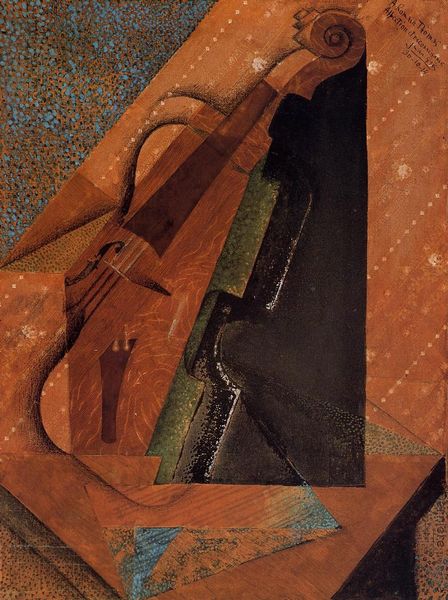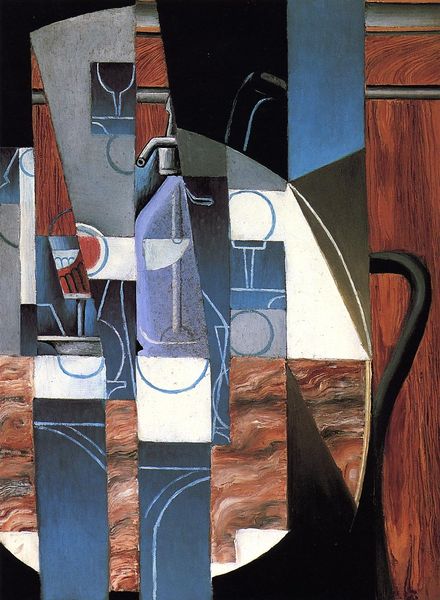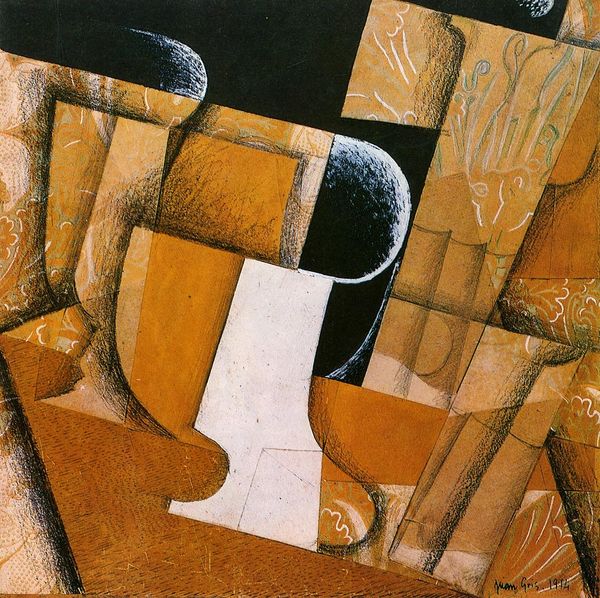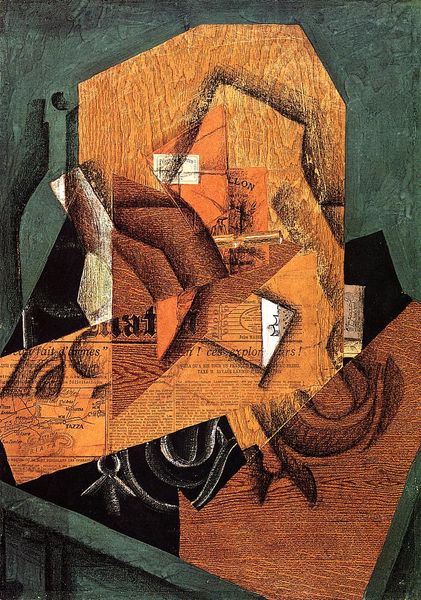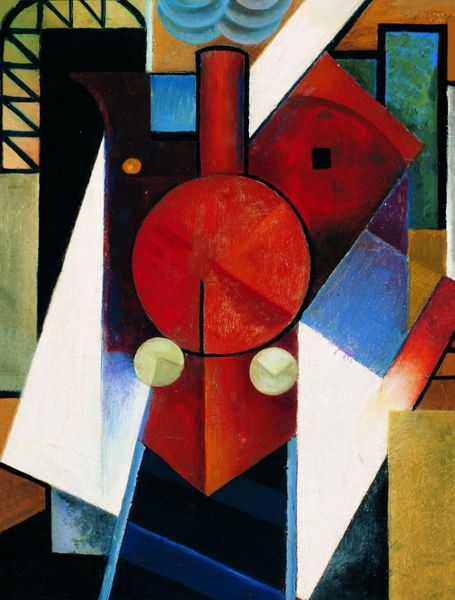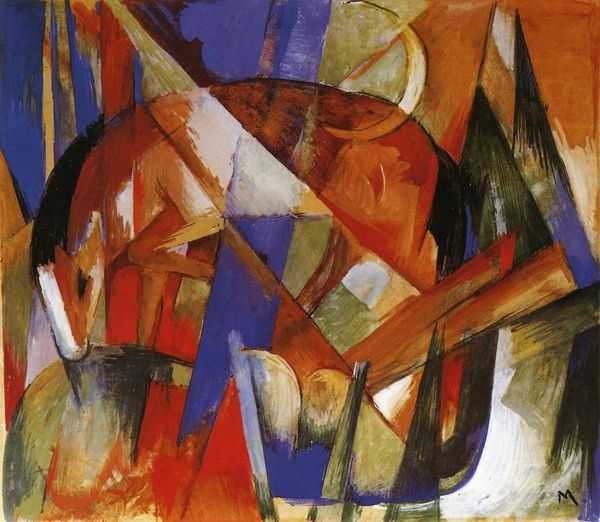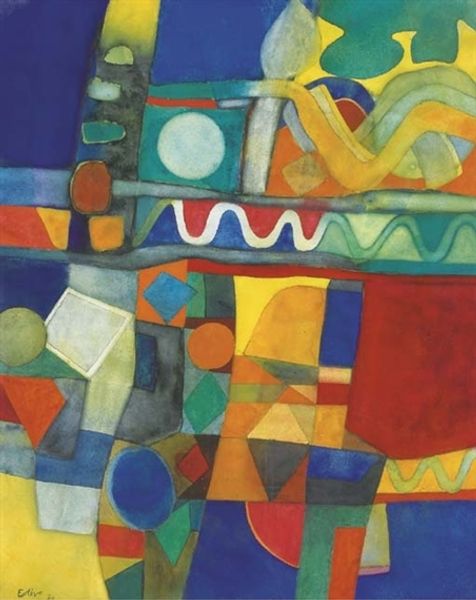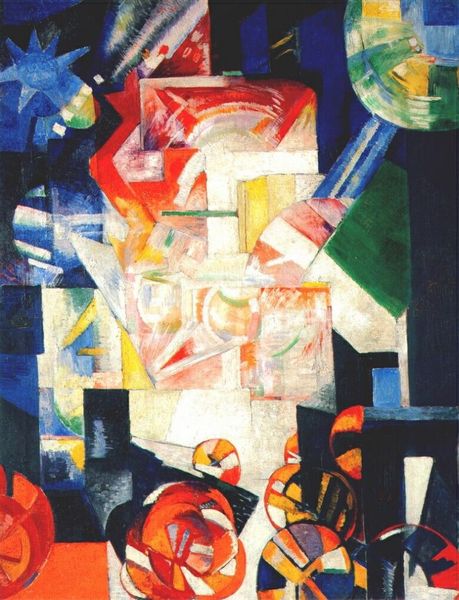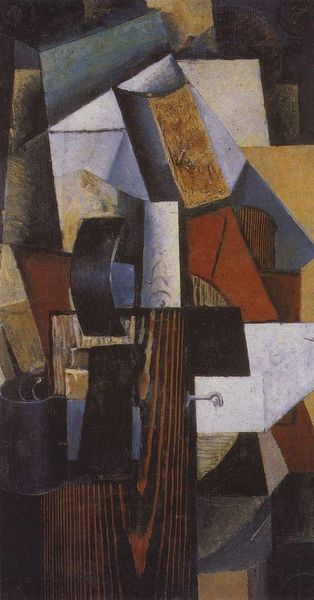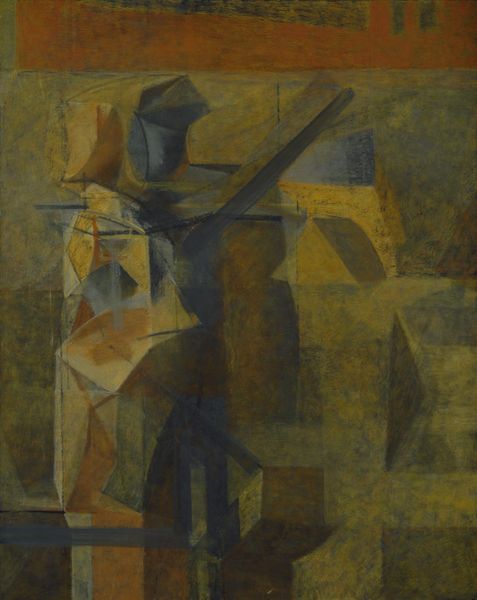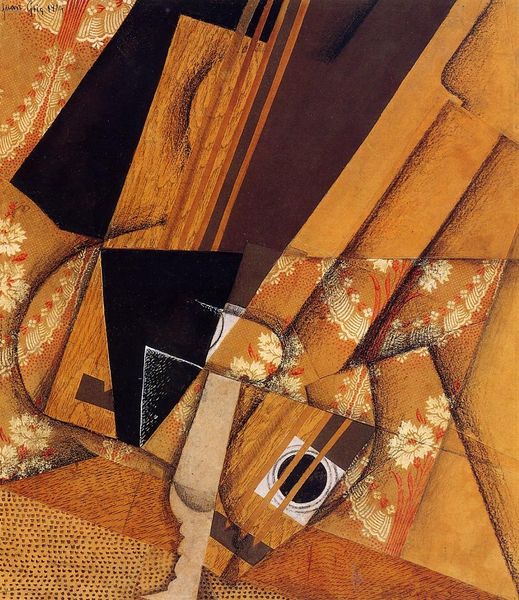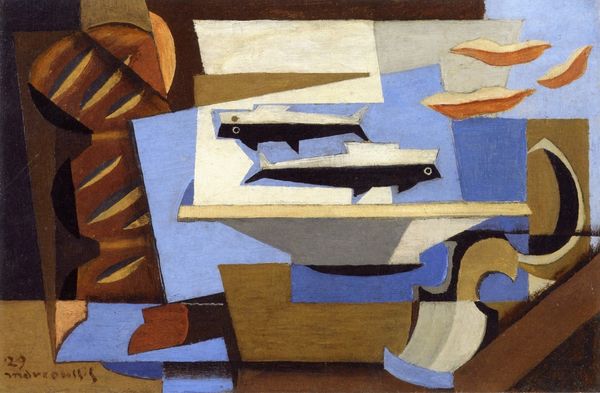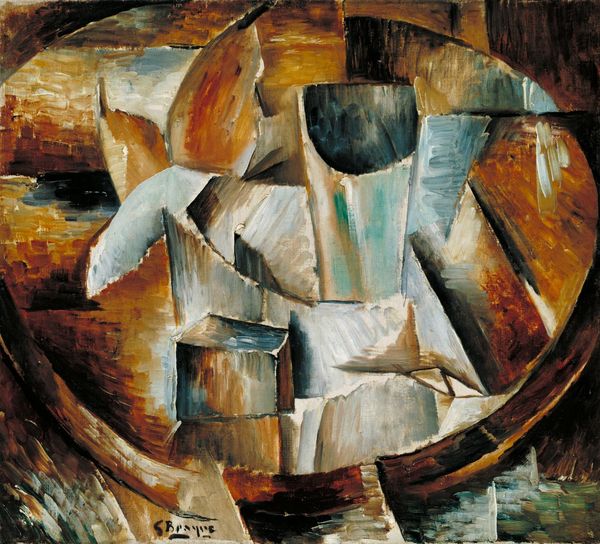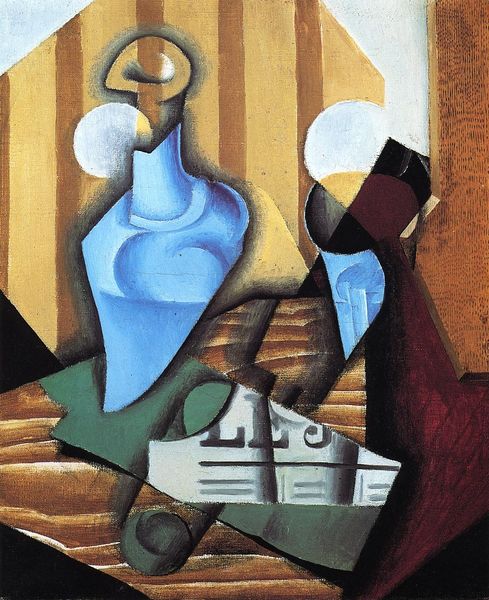
Dimensions: support: 1829 x 787 mm frame: 1900 x 860 x 66 mm
Copyright: © Wyndham Lewis and the estate of Mrs G A Wyndham Lewis by kind permission of the Wyndham Lewis Memorial Trust (a registered charity) | CC-BY-NC-ND 4.0 DEED, Photo: Tate
Editor: Here we have Wyndham Lewis' painting "Bagdad," currently at the Tate. It’s…intense, right? Like a city built from sharp angles and clashing colors. I’m curious, what do you make of it? Curator: For me, it’s a visceral reaction to modernity. Lewis isn’t just painting a city; he’s dissecting it, laying bare its industrial heart, like a mechanized beast. Editor: A mechanized beast... I hadn't considered that. Curator: It’s almost a premonition, isn't it? The way he uses those hard lines and muted tones suggests a world marching towards something unknown and perhaps not so pleasant. Editor: So, it’s not just a depiction, but a warning? Curator: Precisely! And that, my friend, is the beauty of art – it whispers truths the world often ignores. Editor: I'll definitely be thinking about that "mechanized beast" idea from now on. Thanks!
Comments
Join the conversation
Join millions of artists and users on Artera today and experience the ultimate creative platform.
tate 7 months ago
⋮
It is thought that Lewis made Bagdad to decorate a cupboard in his studio on Ossington Street, London. The wood panel is composed of several strips joined together. Its title and design may come from a chapter of Lewis’s book ‘The Caliph’s Design’, published in 1919. Lewis wrote a short parable set in Baghdad, about a Caliph who is unhappy with the appearance of his city. The Caliph creates a Vorticist-style design, instructing an engineer and architect to ‘invent the shapes and conditions that would make it possible to realise my design’. Lewis seems to have developed the imagery from abstract drawings he did the previous year. Gallery label, November 2021
